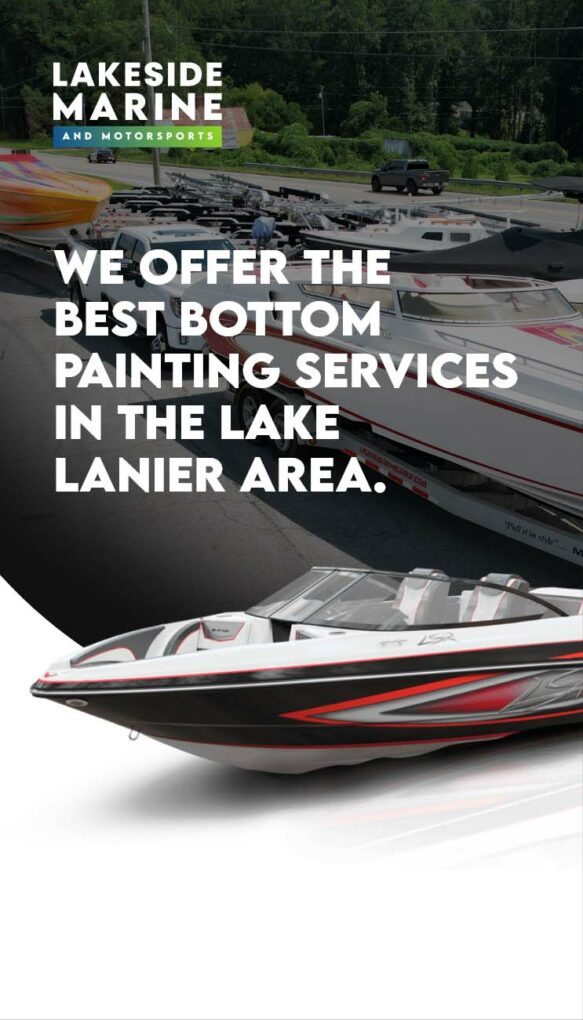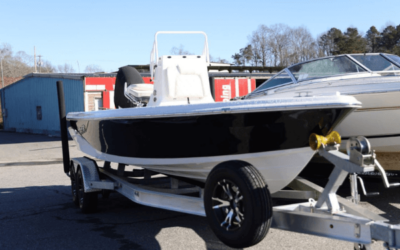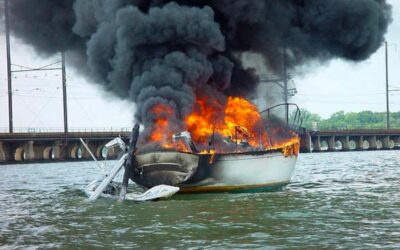Be proactive about winterizing your boat and get it completed well before the first early-season freeze. Winterization for inboard motors and outboard motors share the same process.
Because an unexpected cold snap can spell disaster for your boat engine and lead to costly and time consuming repairs, it is wise to plan and schedule ahead in order to do the service on time.
5 Basics of Boat Winterization:
1) Treat fuel with Stabilizer and run engine to circulate throughout fuel system
2) Drain and purge the cooling system with antifreeze
3) Disconnect the battery. Ideally store in warm place
4) Winterize any boat plumbing
5) Store boat with freshly changed oil, new gear lube, and full hydraulic fluid.
STEP #1: TREAT THE FUEL WITH STABILIZER
First, you’ll want to add stabilizer to your fuel system. Then run your engine in order to cycle it throughout your entire fuel delivery system including the tank, fuel lines, filters, bowls, and injectors. By doing this simple annual maintenance you will ensure easy start up and smooth engine performance in the springtime.
As a side note it is a good idea to top off your fuel tank in the fall in order to reduce water condensation in your tank, which contaminates the fuel.
STEP #2: DRAIN AND PURGE THE COOLING SYSTEM
Secondly, winterize the cooling system of the boat motor to avoid water freezing and damaging your engine through expansion of ice.
Remove all of the drain plugs that are naturally found throughout the cooling system in the block, the manifold, and the exhaust systems.
Once the “sea water” is drained, replace and tighten all of the plugs and then take a glycol-based antifreeze and feed it into your cooling system until it comes out of the exhaust.
This assures you that all of the water has been purged from the cooling system, and that the impeller blades that pump water through the cooling system will not dry out over the winter.
If you aren’t confident to do this on your own, you can check out Lakeside Marine’s boat winterization specials and a certified mechanic will perform the winterization service.
STEP #3: DISCONNECT THE BATTERY
By choosing to disconnect the battery, you will eliminate the possibility of a slow drain on the battery through electronics.
If your battery becomes discharged, it can actually freeze and get ruined. It is best to remove your boat battery and store it indoors in a heated area.
Ideally, it would be placed on a battery charger mid-winter, and again in the springtime prior to reinstallation.
STEP #4: WINTERIZE BOAT PLUMBING
On larger boats you’ll need to also run glycol antifreeze through your sink, shower, and toilet systems. You’ll need to treat both the supply lines, and the drainpipes.
It is essential to winterize boat plumbing because these lines and drains are often in hard to reach places. With simple preventative maintenance you’ll never have to worry about the hassle of boating season repairs.
On larger boats you will also want to winterize your generator.
STEP #5: STORE ENGINE WITH CLEAN OIL AND FLUIDS
Beyond the fuel system and cooling system, the fall is a great time to change your oil so your engine is stored with clean oil. Top off all of your fluids, and put rust preventative lubricant on all your hydraulic arms for your steering, power tilt, and trim tabs.
What about your air filter and fuel filter? Clean is always better. What about servicing any grease fittings? Keep everything lubed to displace moisture, and ensure smooth springtime operation.
Autumn is the best time to change out the fluid on your lower end or drive. This will keep it running smoothly and maximize its longevity.
The lower unit/ drive service should be performed once a year preferably in the fall. This way, the lower unit is free from contaminants and moisture and is stored with fresh clean gear lube.
Common Mistakes in Boat Winterization/Best Practices
1) Didn’t stabilize the fuel.
Fuel breaks down and gets contaminated with water. Injectors get gummed up with old fuel. This creates difficult spring start up and costly maintenance headaches. Best practice: Fill fuel tank with fresh fuel along with stabilizer and run the engine long enough to fully circulate stabilizer throughout the entire fuel system.
2) Cooling system not fully purged of sea water.
It is crucial to bring the engine up to operating temperature to fully circulate the antifreeze throughout the pump, engine block, and exhaust. Best Practice: Run engine long enough to fully open the thermostat and circulate antifreeze until it flows from the exhaust.
3) Battery left connected.
It slowly drains its charge, and the discharged battery freezes and will not take a charge come springtime. Best Practice: Disconnect the battery and ideally store it in a warm place for winter and keep the battery charged.
4) Failure to pour RV anti freeze in sink drain or pump through fresh water supply lines.
Best Practice: Pump fresh water supply tank dry and then add RV antifreeze to the tank and pump antifreeze through the fresh water supply side. Then pour antifreeze down the drain as well.
5) Neglect to change engine oil or gear lube in lower end or outdrive.
Clean engine internals are essential to long engine life. Best Practice: Change engine oil and gear oil every fall to remove corrosive contaminants.
De-winterizing Come Springtime
Be sure to take your boat on a shake down cruise come springtime before loading up the family or entertaining. If you did a proper winterization, start up in springtime should go very smoothly.
1) Start with a fully charged battery and re-connect terminals.
2) Be certain the drain plug for the boat is secure before launching.
3) Inspect all rubber fuel lines and hoses are free of cracks.
4) Inspect wiring is free from corrosion and no critters chewed wires.
5) Inspect boat trailer tires for proper pressure and signs of degradation.
6) Double check your safety equipment is in place like life jackets, fire extinguishers, flares, tool kit including a knife, docking lines, and an anchor.
7) Upon launching, monitor proper engine operating temperature in the first minutes of operation. If an impeller went bad over the winter your cooling system will fail to keep your engine cool.
CONCLUSION
Keep your boat in top running condition in the fall, so you’re ready to hit the throttle in the springtime. Check out Lakeside Marine’s fall boat maintenance specials and boat winterization specials.
If winterization maintenance tasks are properly addressed in the autumn, your launch in the springtime is sure to be joyful and satisfying.
Ready to winterize your boat and get professional results? Go ahead and schedule winterization performed by certified mechanics from Lakeside Marine. Call (678) 322-7877 or go to https://lakesidemarine.com/services/




0 Comments